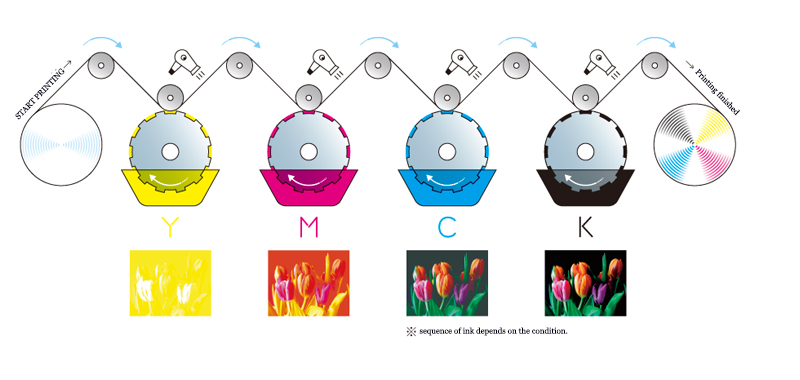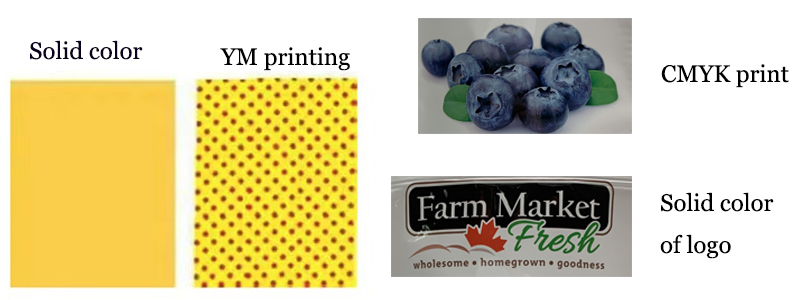CMYK Printing
CMYK stands for Cyan, Magenta, Yellow, and Key (Black). It’s a subtractive color model used in color printing.

Color Mixing: In CMYK, colors are created by mixing varying percentages of the four inks. When used together, they can produce a wide range of colors. The blending of these inks absorbs (subtracts) light, which is why it is termed subtractive.
Advantages Of Cmyk Four-Color Printing
Advantages: rich colors, relatively low cost, high efficiency, less difficult to print, widely used
Disadvantages:Difficulty in controlling color: Since a change in any of the colors that make up the block will result in a subsequent change in the color of the block, leading to uneven ink colors or an increased probability of discrepancies.
Applications: CMYK is primarily used in the printing process, especially for full-color images and photographs. Most commercial printers use this model because it can produce a vast array of colors suitable for different print materials.Suitable for colorful designs, image illustrations, gradient colors and other multi-color files.

Color Limitations: While CMYK can produce many colors, it doesn’t encompass the entire spectrum visible to the human eye. Certain vibrant colors (especially bright greens or blues) may be difficult to achieve using this model.
Spot Colors and Solid Color Printing
Pantone colors, commonly known as spot colors. It refers to the use of, black, blue, magenta, yellow four-color ink other than the other colors of ink into, a special kind of ink.
Spot color printing is used to print large areas of the base color in packaging printing. Spot color printing is a single color with no gradient. The pattern is field and the dots are not visible with a magnifying glass.
Solid color printing often involves using spot colors, which are pre-mixed inks used to achieve specific colors instead of mixing them on the page.
Spot Color Systems: The most commonly used spot color system is Pantone Matching System (PMS), which provides a standardized color reference. Each color has a unique code, making it easy to achieve consistent results across different prints and materials.
Advantages:
Vibrancy: Spot colors can be more vibrant than CMYK mixes.
Consistency: Ensures uniformity across different print jobs as the same ink is used.
Special Effects: Spot colors can include metallics or fluorescent inks, which are not achievable in CMYK.
Usage: Spot colors are often preferred for branding, logos, and when specific color accuracy is crucial, such as in corporate identity materials.
Choosing Between CMYK and Solid Colors

Type of Project: For images and multi-color designs, CMYK is usually more appropriate. For solid areas of color or when a specific brand color needs to be matched, spot colors are ideal.
Budget: CMYK printing can be more cost-effective for high-volume jobs. Spot color printing may require special inks and can be more expensive, especially for smaller runs.
Color Fidelity: If color accuracy is crucial, consider using Pantone colors for spot printing, as they provide exact color matches.
Conclusion
Both CMYK printing and solid color (spot) printing have their unique strengths and weaknesses. The choice between them generally depends on the specific needs of your project, including desired vibrancy, color accuracy, and budget considerations.
Post time: Aug-16-2024



